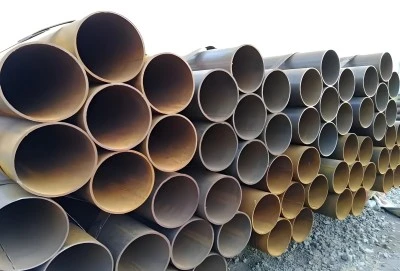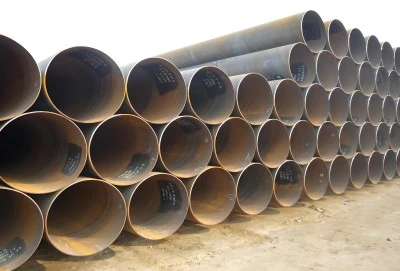Customizing structural steel pipes has emerged as a crucial aspect of modern construction, offering enhanced performance, cost efficiency, and optimal structural integrity. The construction industry's evolving demands require innovative approaches to structural components, making customization an essential consideration for engineers, architects, and contractors. Understanding the benefits of customized structural steel pipes enables construction professionals to make informed decisions that significantly impact project outcomes. The integration of advanced manufacturing technologies and engineering principles has revolutionized the way structural steel pipes are customized for specific applications.
|
|
|
Why Customization Matters In Structural Projects?
The significance of customization in structural steel pipe applications extends beyond basic dimensional requirements. Custom solutions address specific project challenges, optimize material usage, and enhance overall structural performance. Modern construction projects face unique demands regarding load-bearing capabilities, environmental conditions, and architectural specifications that standardized products may not adequately fulfill.
Customization allows engineers to optimize the structural design by precisely matching component specifications with project requirements. This optimization results in improved weight distribution, enhanced load-bearing capacity, and reduced material waste. Research conducted by the American Institute of Steel Construction indicates that customized structural components can reduce overall project costs by 12-18% through improved material efficiency and simplified installation processes.
The implementation of Building Information Modeling (BIM) technology has revolutionized the approach to structural steel customization. BIM enables precise visualization and analysis of customized components within the overall structural system, allowing for early detection of potential conflicts and optimization opportunities. Studies show that BIM integration in customized structural steel projects can reduce construction time by up to 15% and decrease change orders by approximately 40%.
Advanced computational methods enable engineers to perform sophisticated structural analyses during the design phase. These analyses consider factors such as wind loads, seismic forces, thermal expansion, and dynamic loading conditions. The ability to simulate structural behavior under various scenarios helps optimize customization parameters for maximum performance and safety.
Cost considerations play a significant role in customization decisions. While initial costs for customized components may be higher than standard products, the long-term benefits often justify the investment. Improved structural efficiency, reduced maintenance requirements, and extended service life contribute to favorable lifecycle cost analyses. Economic studies indicate that properly customized structural components can reduce total project lifecycle costs by 15-25%.
Tailored Sizes And Dimensions For Specific Applications
Size customization represents a fundamental aspect of structural steel pipe optimization. The ability to specify exact dimensions ensures optimal performance while maintaining cost-effectiveness. Modern manufacturing capabilities allow for precise control over critical dimensions, including diameter, wall thickness, and length, enabling engineers to create highly efficient structural solutions.
Dimensional accuracy plays a crucial role in structural integrity and construction efficiency. Advanced manufacturing processes maintain tolerances within ±0.5mm for critical dimensions, ensuring seamless integration during assembly. This precision reduces on-site modifications, accelerates installation processes, and minimizes material waste. Research indicates that precise dimensional customization can reduce installation time by up to 25% compared to standard components.
Load-bearing requirements significantly influence dimensional specifications. Engineers analyze various factors, including dead loads, live loads, wind loads, and seismic conditions, to determine optimal pipe dimensions. Finite Element Analysis (FEA) tools enable precise calculation of stress distributions and deformation patterns, ensuring that customized dimensions meet or exceed structural requirements while maintaining material efficiency.
The relationship between pipe dimensions and structural performance requires careful consideration of multiple variables. Wall thickness affects both load-bearing capacity and weight optimization, while diameter influences moment of inertia and overall structural behavior. Advanced computational methods enable engineers to optimize these parameters based on specific project requirements and loading conditions.
Manufacturing processes for customized structural steel pipes incorporate sophisticated quality control measures. Non-destructive testing methods, including ultrasonic testing and radiographic inspection, ensure dimensional accuracy and structural integrity. Statistical process control techniques monitor manufacturing parameters to maintain consistent quality across production runs.
Transportation and installation considerations influence dimensional customization decisions. Length specifications must account for transportation limitations and site access constraints. Connection details and assembly requirements affect end preparation specifications and tolerance requirements. Careful coordination between manufacturers, designers, and contractors ensures successful implementation of customized components.
Enhancing Strength And Durability Through Custom Coatings
Custom coating solutions provide essential protection against environmental factors while enhancing structural performance. Modern coating technologies offer multiple options for corrosion resistance, fire protection, and aesthetic requirements. The selection of appropriate coating systems depends on environmental exposure conditions, service life requirements, and specific project specifications.
Advanced surface preparation techniques ensure optimal coating adhesion and performance. Methods such as automated blast cleaning achieve surface profiles between 50-75 micrometers, providing an ideal substrate for coating application. Research demonstrates that proper surface preparation can extend coating service life by 40-60% compared to standard preparation methods.
Multi-layer coating systems provide comprehensive protection against various degradation mechanisms. These systems typically include primers for corrosion resistance, intermediate coats for barrier protection, and topcoats for UV resistance and aesthetic purposes. Studies indicate that properly specified multi-layer systems can provide protection for up to 25 years in aggressive environments.
The development of specialized coating formulations addresses specific performance requirements. Intumescent coatings provide fire protection by expanding up to 50 times their original thickness when exposed to high temperatures. Anti-microbial coatings incorporate advanced materials that inhibit bacterial growth, making them ideal for healthcare and food processing facilities.
Quality control procedures for coating applications involve comprehensive testing and inspection protocols. These include dry film thickness measurements, adhesion testing, and holiday detection to ensure coating integrity. Environmental monitoring during application ensures optimal conditions for coating cure and performance.
Maintenance considerations influence coating system selection and specification. Easy-to-maintain systems reduce lifecycle costs and extend service life. Documentation of coating specifications, application procedures, and maintenance requirements ensures proper long-term performance of protective systems.
LONGMA GROUP Structural Steel Pipe Customized
LONGMA GROUP specializes in manufacturing ASTM A500 structural tubing, offering comprehensive customization capabilities to meet diverse project requirements. Their product range includes grades A, B, and C, with outer diameters spanning from 114.3mm to 1422mm. This extensive size range enables them to serve various construction applications effectively.
Research and development initiatives at LONGMA GROUP focus on continuous improvement of manufacturing processes and product performance. Investment in advanced manufacturing equipment and quality control systems demonstrates their commitment to maintaining high standards of product quality and customer satisfaction.
Supply chain management systems ensure reliable material sourcing and timely delivery of customized products. Strategic partnerships with suppliers and logistics providers enable efficient project execution and customer support. Their global presence facilitates international project coordination and technical support.
The company maintains strong relationships with construction professionals worldwide, providing reliable support and expertise for structural steel applications. Their commitment to quality and customer service has established them as a trusted partner in the construction industry. Interested parties can contact LONGMA GROUP at info@longma-group.com for detailed information about their customization capabilities and technical support services.














